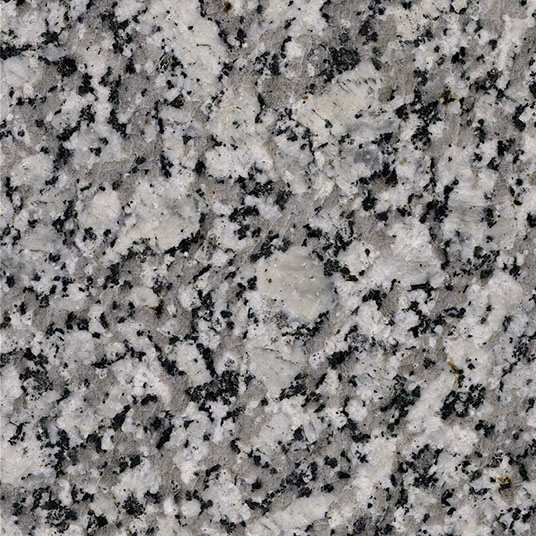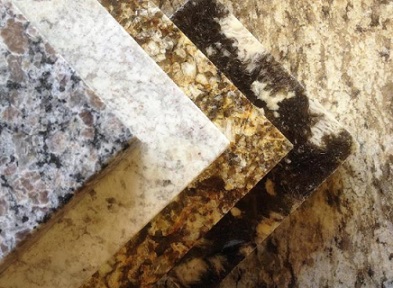- Tell : 09131114998
- Email : info@uranus-stone.com

The use of granite stone in the facade of the building
- 1401/06/13 ,
- stone industries Uranus
- 0 Comment
Granite facade
We all know that the stone facade is one of the most magnificent types of facades that have always been liked by the majority. For this purpose, different stones can be used, among them is granite. Stay with us to know more about this stone.
Features of granite stone
Granite is one of the hardest building stones with a density of 2.75 grams per cubic centimeter, which is cut using old machines and special diamonds. Of course, with the introduction of new cutting devices such as waterjet, the cutting blades have given way to water jets with strong air pressure..jpg)
Thanks to such technology, today we see the cutting of the hardest stones in the shortest possible time, with the least thickness and very high precision. Of course, the cost of granite processing is high, but this very hardness has made the stone resistant to scratches, shocks and heat. . Also, all types of surface payments can be implemented on it.
Among these finishes: flamed (fired surface), polished, honed, leather, sandblasted, axed, combined, etc. If the facade stone is granite, you can be sure that it has a very high resistance against destructive weather phenomena (acid rains, sandstorms, extreme temperature differences, extreme cold and heat, etc.), color change, staining and absorption. Water, shock and abrasion and... has
Read more: What is granite?
Application of granite stone
The use of granite is not limited to building facades and landscaping and has various uses. For example, granite stepping stone, floor stone in high traffic places, counter stone are among the most widely used uses of this strong and igneous stone. Due to its lack of water absorption (or minimal water absorption), granite is very suitable for use in wet areas and places in contact with water. Is .
This feature for use on the exterior, on the one hand, has resulted in high durability against the acid rains of polluted cities, and on the other hand, it is a worrying factor in the lack of adhesion in traditional methods (installation using cement mortar).
Because the lack of water absorption and porosity in granite prevents proper adhesion with the mortar and connection to the wall, and the risk of the stone being released and falling in a short time is very likely. Therefore, some solutions are suggested for the implementation of granite facade:
Granite facade stone installation methods
In general, there are two methods of installing the facade of the building: dry and wet. Even though it is common (due to ease of access and low price), it is an outdated method that is only used in some projects. However, due to various reasons, if you have to use cement mortar for facade painting.
It is recommended not to neglect the scooping of the stone at the beginning of the work. Of course, due to its high hardness, granite is not a good drill, and Hilti drills should be used for screwing and doweling. Wama dry installation; This type of facade implementation is generally done in three ways: visible, invisible and using stone glue.
Visible and invisible method
In this method, aluminum substructure is used, but the used clips are well visible from the work. The advantage of this method is to use stones of any thickness. But in the invisible method, which is done in several ways, there is no need for any screws, plates or clips, and all the connection steps are done from below. There is another example of dry connection, which is called stone glue connection
Implementation of stone facade with stone glue
Special glue for this work are two-component glues, some of which are based on epoxy resin and some are based on polyester. Of course, it is better not to use polyester adhesives for the facade because they are not very durable against the conditions outside the building. But two-component epoxy resin adhesives are suitable for any part of the building (either inside or outside).
Among the types of these adhesives, it is recommended to use the original brand and its origin, that is, megapoxy stone adhesive made in Australia, which guarantees the safety of the work and you will not have any worries about its adhesion. Using glue is a convenient and fast method compared to other methods, which brings all the advantages of dry installation methods.
Tips on installing stone facade
According to the national building regulations, the weight of the building should not exceed the standard value. Since stone is one of the heavy weight materials, it is better to look for stones with lower density in the facade. But sometimes granite and crystal (china) are selected due to the client's taste or prevailing weather conditions in the region.
Now, if the building is to be built using cement mortar, despite the heavy weight of this stone, it will definitely impose a lot of burden on the building! Therefore, to control the weight of the building, dry installation methods and the use of strong stone glue should be used. Therefore, in addition to the choice of materials, accuracy in the choice of execution is very important.
Currently, long stones (especially 40 long) are used for most stone facades. These dimensions are especially common for travertines. Regarding the dimensions of the granite face stone, it is not possible to make a definite opinion because, in general, the dimensions used in the stone is a matter of taste and depends on the architect's design.
But often for large commercial and luxury residential projects, they seek the use of slab dimensions (both interior and exterior). The type of stone used can be travertine stone, crystal stone , granite stone, etc. Black granite slab stone is one of the best candidates chosen by architects for such projects.
Read more: Chemical compositions of granite
As mentioned, the size and color is a matter of taste and can be used in combination with other materials. A raw stone is required to undergo various processing to become a consumer product. This processing consists of different stages and is done using different equipments and consumables, the quality and method of each one affects the final quality of the stone and its lifespan.
On the other hand, the stone used in the facade must have good resistance against such phenomena due to continuous exposure to rains, temperature changes, sunlight, wind, etc. Therefore, in addition to the quality of the stone, the processing quality must also be of sufficient standard.
Sometimes, to compensate for the background color of the stone, they paint it to reveal a more beautiful stone. This work is done especially in black stones.
But the stability of these colors depends on the quality of the materials used and how to store them. Such a stone should not be exposed to sunlight in order to maintain its color well, because it will become pale. Of course, in Among the types of stones, granite is much more durable against color change, which is one of the advantages of this stone.
The price of used granite stone
The first and most important factor in determining the price is the mineral from which the stone is extracted. After that, the processing quality, which includes the type of cutting machine, the type of consumables (to cover the surface and seal it, paint on the stone, UV materials, etc.), the type of surface finish on the stone (film, polished, leather, etc.).
Another determinant is the size and thickness of the stone used. Of course, the larger the size of the stone, the more expensive it will be. Therefore, the price of granite slabs is a little high. The quality of the stone and the cost of transportation are also other factors that affect price.
